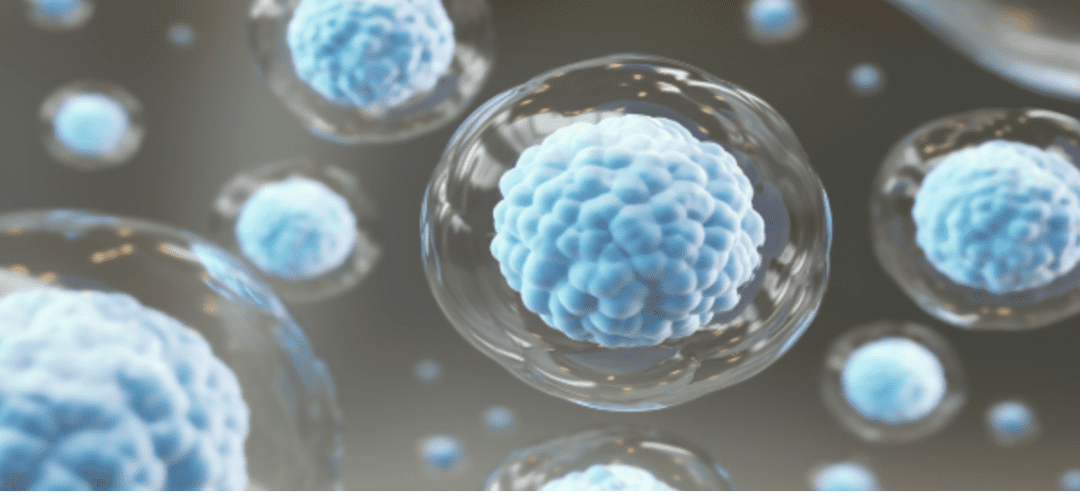
by Stemedix | Sep 5, 2022 | Parkinson's Disease, Stem Cell Therapy
Treating the neurodegenerative disorder Parkinson’s disease can be incredibly challenging. Since the condition’s progression varies widely, there is no standard treatment. Ideally, patients work with their healthcare provider to create a treatment plan tailored to their symptoms. Here we will discuss the current treatments for Parkinson’s Disease.
Most treatment plans include a multipronged approach, combining exercise, therapies, and medications to manage symptoms and slow the condition’s progression.
Exercises for Parkinson’s Disease
Exercise is critical to maintaining balance, mobility, and strength for those with Parkinson’s. When using physical activity to manage Parkinson’s symptoms, patients should combine aerobic, strength, balance, agility, and flexibility exercises.
Many activities incorporate these elements, such as yoga, biking, running, dance, and Pilates.
Therapies for Treating Parkinson’s Disease
Depending on the symptoms a patient experiences, several therapies can assist with mobility, speech, and function.
Physical Therapy
Many Parkinson’s patients are prescribed physical therapy to remain independent. These therapies can retrain the muscles and slow the progression of hypokinesia, or smaller movements that develop as the disease progresses.
Additionally, physical therapy can aid balance, flexibility, strength, and coordination.
Occupational Therapy
Occupational therapy allows those with Parkinson’s to remain active and find new ways to complete tasks that become more difficult as the condition progresses. Patients also learn to use new equipment to stay independent and add ease to movement.
Speech Therapy
Many patients with Parkinson’s experience speech problems such as low speech volume, hoarse or breathy speaking, or lack of pitch. Speech therapy can help with speaking mechanics, using assistive devices, and swallowing concerns.
Medications for Parkinson’s Disease
Currently, the most common medication for managing the symptoms of Parkinson’s disease is a drug called levodopa. The brain converts levodopa to dopamine, helping replace the neurotransmitter’s loss.
Since levodopa can cause nausea, the medication is almost always administered with a companion drug, carbidopa, which manages stomach upset and nausea symptoms.
Unfortunately, levodopa’s absorption is inconsistent because it takes a long path from the small intestine through the blood to the brain. The inconsistency can lead to a rise and fall in the brain’s dopamine levels.
Additionally, the treatment becomes less effective over time, as the cells that convert levodopa to dopamine continue to decline. There are several other medications aimed at reducing Parkinson’s symptoms. However, they all have some limitations.
Surgical Options
Surgical treatments for Parkinson’s disease include deep brain stimulation (DBS) and Duopa.
Deep Brain Stimulation
DBS aims to reduce patients’ movement-related symptoms. In this procedure, a surgeon implants electrodes into the brain. These electrodes deliver electrical stimulation into targeted areas that control movement.
Many patients experience a reduction in symptoms after DBS surgery. However, the amount of reduction varies, and most patients remain on their medications, though in smaller doses.
Duopa
Duopa allows carbidopa-levodopa medication to be administered directly into the intestine via a gel. This methodology improves absorption and reduces the fluctuation of dopamine levels.
Patients require surgery to place a tube in the intestine. Then, a pump delivers Duopa directly to the intestine via the tube.
New Alternative Therapy
Researchers are seeing promising results in investigating regenerative medicine, also known as stem cell therapy, for managing Parkinson’s disease. Early studies offer hope that stem cells will provide a more comprehensive option to manage Parkinson’s symptoms. If you would like to learn more about the treatment options available at Stemedix for Parkinson’s Disease, contact a care coordinator today!

by admin | Jun 3, 2022 | Parkinson's Disease, Stem Cell Research
Research has shown neuroinflammation to have a significant role in the pathogenesis of Parkinson’s disease (PD). Much of this same research has also demonstrated mesenchymal stem cells (MSCs), and specifically, allogeneic bone marrow-derived MSCs, can be effectively used as an immunomodulatory therapy for the potential treatment of PD.
The goal of Schiess et al.’s study was to evaluate the safety and tolerability of first-of-its-kind intravenous allogeneic bone marrow-derived MSCs (allo-hMSCs) in patients with PD.
Neurological disorders continue to be the leading cause of disability-adjusted life years lost worldwide (a statistical measure of years of healthy life lost as a result of death or disability relating to the constitution). While the numbers of those diagnosed with neurological disorders, including stroke, multiple sclerosis, motor neuron disease, and dementia continue to increase at a rapid rate, none are growing as fast as PD.
Considering the rapid progression of progressively intensifying symptoms associated with PD and the relatively poor progress in the discovery of therapies to prevent, or even slow, progression of PD, the authors identified the identification of effective and safe disease-modifying therapies for PD to be a priority.
As part of this study, Schiess et al. studied the peripheral immune system in PD neurodegeneration through the evaluation of LPS rat models, glial cells, and cerebrospinal fluid gathered from patients. As a result of these investigations, the authors determined that an adaptive immune response does contribute to progression supporting the rationale for using MSCs as a potential therapy for PD.
To evaluate the effectiveness of this therapy, Scheiss et al. developed and conducted a single-center, open-label, ascending-dose-escalation phase 1 clinical study involving 20 patients with mild to moderate PD. Participants were assigned to single intravenous doses of 1 of 4 doses and evaluated at weeks 3, 12, 24, and 52 post-infusion.
In addition to evaluating the safety and tolerability of an intravenous infusion of bone marrow-derived allow-hMSCs, the research team also evaluated participants for relevant biomarkers for the mechanism of action and clinical assessment of PD progression.
The authors point out that while there were no serious adverse reactions related to the infusion and no responses to donor-specific human leukocyte antigens, the most commonly reported side effect was dyskinesias and hypertension. Further studies will need to monitor the emergence or exacerbation of post-infusion dyskinesias and hypertension to better understand their occurrence as part of this study.
In conclusion, Sheiss et al. found that a single infusion of allogeneic MSCs ranging from 1 to 10×106 intravenous allo-hMSCs/kg was safe, well tolerated, and not immunogenic in patients with mild-to-moderate PD. The authors also found that peripheral inflammation markers appeared to be reduced at 52 weeks after receiving the highest dose, leading to the conclusion that the highest dose had the most significant effect at the 52-week interval.
Based on these findings, the authors recommend moving forward with a phase 2 randomized, placebo-controlled efficacy trial using allo-hMSCs in a larger population of well-defined Parkinson’s disease patients.
Source: “Allogeneic Bone Marrow-Derived Mesenchymal Stem Cell Safety in ….” 27 Mar. 2021, https://movementdisorders.onlinelibrary.wiley.com/doi/full/10.1002/mds.28582.

by Stemedix | Apr 11, 2022 | Parkinson's Disease, Mesenchymal Stem Cells, Stem Cell Therapy
Regenerative medicine, also known as stem cell therapy, is emerging as a viable treatment for Parkinson’s disease as clinical trials move through the FDA approval process. Patients in clinical trials see positive results from mesenchymal stem cell therapy for Parkinson’s Disease.
What Is Parkinson’s Disease?
Parkinson’s disease is a progressive, neurodegenerative condition. It occurs when dopamine-producing brain cells stop working or die. Dopamine’s role in the body is to send messages between nerve cells or from nerve cells to muscle cells, affecting the body’s physical and mental functions.
Symptoms of Parkinson’s start gradually, and the disease worsens over time. Early symptoms include tremors in the hands, rigidity, and slowness of movement. Patients with Parkinson’s also experience difficulty with balance, and eventually, with speech, writing, and automatic muscle movement such as blinking.
While there’s currently no cure for Parkinson’s, there are medications that patients can take to manage symptoms. Some symptoms are also relieved from surgery to regulate specific brain areas.
Patients with Parkinson’s disease experience a progressive decline in their ability to function, with treatments only offering some relief. The emergence of mesenchymal stem cell therapy as an option to reverse the damage and halt the progression of Parkinson’s disease is an exciting development.
What Are Mesenchymal Stem Cells?
Stem cells are considered to be the building blocks of cells. All specialized cells in the body come from stem cells. When stem cells divide, they either produce more stem cells, called daughter cells, or differentiate into specialized cells, such as bone, blood, or brain cells.
Mesenchymal stem cells (MSCs) are adult stem cells commonly found in bone marrow. They also exist in adipose (fat), umbilical cord tissue, amniotic fluid, and other locations. MSCs remain dormant in the bone marrow until they’re needed to facilitate healing in the body.
MSCs differentiate into:
- Bone cells
- Muscle cells
- Skin cells
- Cartilage
- Neural cells
- Corneal cells
MSCs are present throughout your life, but they age as the body ages, making them less effective and concentrated over time.
How Can Mesenchymal Stem Cells Benefit Those with Parkinson’s Disease?
In recent clinical trials using mesenchymal stem cells on Parkinson’s patients, the cells significantly improved patients’ symptoms, including facial expressions, gait, and rigidity or “freezing” episodes. Some of the patients in this study substantially reduced their dosages of medicines used to control Parkinson’s symptoms.
In a 2005 study, researchers determined that stem cells may be capable of differentiating into dopamine neurons, which are damaged or destroyed with Parkinson’s.
While the true potential of mesenchymal stem cell benefits in Parkinson’s patients is still being investigated, there is reason to believe that patients with the neurodegenerative condition could experience a significant improvement in their quality of life with stem cell therapy. If you are interested in learning more about Mesenchymal Stem Cell Therapy for Parkinson’s Disease, contact us today at Stemedix!

by admin | Oct 8, 2021 | Stem Cell Therapy, Exosomes, Parkinson's Disease, Stem Cell Research
Parkinson’s disease (PD) is a debilitating neurodegenerative disorder that currently affects nearly 6 million people worldwide and is currently the second most common neurological condition, behind only Alzheimer’s.
Although the exact cause of PD remains unclear, the condition is characterized by the gradual loss of nerve cells in the brain responsible for producing the neurotransmitter dopamine[1]. While no cure for PD currently exists, current therapeutic treatment approaches focus on improving quality of life but are not able to prevent or slow the progression of the disease.
Recent research has demonstrated positive effects of mesenchymal stem cell (MSC) transplantation that has been associated with secromes; noted beneficial effects include providing a self-regulated regenerative response that limits the area of lesions. Additionally, these MSC-derived secretomes compose soluble factors and encapsulated extravesicles (EV). These EVs have been found to have a significant impact on physiological processes, including cell-to-cell communication.
Considering MSCs are readily available and easily isolated from a number of sources, including adipose tissue, umbilical cord Wharton’s Jelly, bone marrow, and dental pulp, these stem cells are thought to hold potential as a therapeutic approach to managing PD.
As part of this review, d’Angelo et al. highlight a number of studies demonstrating the potential of MSCs in improving a number of conditions and symptoms consistent with those demonstrated in PD. In these studies, animal models demonstrate improved motor behaviors and correction of functional impairment after transplantation of MSCs.
The authors point out that further research exploring cell-free, therapeutic, personalized approaches for the different neurodegenerative diseases, including PD, is needed.
d’Angelo et al. also note that, while MSC-derived secretomes have shown positive effects on neuronal cell survival, differentiation, and proliferation, further studies are needed to fully understand all of the bioactive molecules.
Since MSC-derived secretomes are able to stimulate neurotrophic and neuronal survival pathways and appear to counteract neuronal death, they could potentially be a beneficial tool in future management and prevention efforts for a number of neurodegenerative conditions, including Parkinson’s disease, Alzheimer’s disease, and stroke.
Source:(2020, July 23). Insights into the Effects of Mesenchymal Stem Cell-Derived … – NCBI. Retrieved from https://www.ncbi.nlm.nih.gov/pmc/articles/PMC7432166/
[1] “Parkinsonfoundation.org -.” https://parkinsonfoundation.org/. Accessed 5 Oct. 2021.

by Stemedix | Mar 8, 2021 | Parkinson's Disease
Receiving a diagnosis of any chronic condition can be overwhelming, and Parkinson’s disease (PD) is certainly no exception. While it’s normal to feel a range of emotions after you’re first diagnosed, you might also feel a sense of relief to have a concrete diagnosis. And, with an accurate diagnosis, you can also begin your pursuit of a comprehensive PD management plan, which begins with the following steps.
Team Up with a Specialist
First and foremost, you’ll want to seek out a medical professional who specializes in movement disorders. These professionals focus on emerging treatments and can help you manage any persistent symptoms which aren’t responding to medications. You can still see your primary care provider, but these neurologists have extensive knowledge of Parkinson’s therapies and are well-worth researching.
Allow Time to Adjust
There are countless resources online to help you navigate the newly diagnosed phase, but don’t feel as if you have to learn everything right away. Give yourself time to process the news first. Then, consider joining online groups or local communities to learn more about PD management. The National Parkinson Foundation and Michael J. Fox Foundation for Parkinson’s Research are great resources to start with.
Share on Your Terms
In time, you’ll likely want to tell everyone in your close circle about your diagnosis. Telling colleagues about your PD can help squash rumors and may simplify matters such as adjusting your schedule for doctors’ appointments. You’ll also want to have ongoing conversations with your partner and children to keep them in the loop about how you’re feeling and what they can do to support you.
Stay Active
Research supports regular exercise for people with Parkinson’s Disease and even shows that physical activity can help improve PD symptoms. People who started exercising 2.5 hours a week earlier after their diagnosis experienced a slower decline than their peers, for instance. While there’s no precise formula for exercising for PD, experts suggest a routine that blends stretching, cardio, and strength.
Stay Social
It can be tempting to withdraw from activities and others after being diagnosed with Parkinson’s Disease. Yet, mental and social wellness can decline when you disengage. To that end, you may want to consider staying in the workforce if you’re still active in your career. You should also continue pursuing the social activities you enjoy, and may even want to think about joining new clubs or programs. These outlets can help promote mental and emotional wellbeing. If you want to learn more about your options after being newly diagnosed with Parkinson’s Disease then contact a care coordinator today!

by admin | Aug 7, 2020 | Parkinson's Disease, Stem Cell Therapy
Parkinson’s disease is a chronic, progressive neurological disorder for which there is no cure. The motor symptoms of Parkinson’s disease include resting tremor, slowness of movement, shuffling gait, and “masked facies” (i.e. muted facial expressions). Over time, patients with Parkinson’s disease may experience cognitive problems such as memory loss, impaired judgment, and poor planning. Later in the illness, these cognitive symptoms may progress to a condition called Parkinson’s dementia. Patients may also develop depression, anxiety, pain syndrome, visual hallucinations, and sleep disturbances. The disease gets progressively worse until patients succumb from complications of the disease after about 10 years on average.
Current treatments for Parkinson’s disease are only able to reduce symptoms—no drug therapy can modify or stop the disease from progressing. Parkinson’s disease is caused by the destruction of brain cells in the substantia nigra; substantia nigra cells provide the neurotransmitter, dopamine, to various locations in the brain. Consequently, most standard treatments are designed to improve dopamine neurotransmissions such as levodopa, dopamine agonists, and MAO B inhibitors. Deep brain stimulation, a procedure in which electrodes are inserted deep within the brain, has helped reduced tremor. There are diet suggestions that may help symptoms or increase appetite.
Ideally, physicians would be able to treat the cause of Parkinson’s disease rather than simply control symptoms. Dr. Salem provides an interesting review of the potential uses of stem cells for Parkinson’s disease. Indeed, he argues that stem cell transplantation has the potential to replenish lost cells in Parkinson’s disease.
The first step, according to Dr. Salem, is to identify the appropriate type of stem cell for use in Parkinson’s disease. He reviews the main types, namely embryonic stem cells, neural stem cells, induced pluripotent stem cells, and mesenchymal stem cells, discussing their pros and cons. The scientist provides a convincing case for why mesenchymal stem cells may be the best choice. For cell-based therapy, he writes, mesenchymal stem cells have two major effects: a trophic effect and the ability to differentiate into a broad spectrum of cells for the replenishment of lost cells.
Indeed, mesenchymal stem cells can be induced to become functional dopamine neurons, the very cells that are destroyed by Parkinson’s disease. Moreover, when mesenchymal stem cells are placed into the brains of mice or humans with Parkinson’s disease (or, in the case of mice, a model of the disease), most of the stem cells remained in the injection site for at least 10 weeks after transplantation. The stem cells increased neuronal plasticity (neurorescue), cell survival, dopamine levels, and the formation of new neuron progenitor cells (neurogenesis). At the same time, stem cells decreased inflammation, gliosis (a growth of non-neuronal brain cells called glia), and death signaling.
Of course, clinical trials will be needed to continue the study of the safety and efficacy of stem cell transplantation for Parkinson’s disease, but the chance of having a treatment that actually goes to the cause of the disease is an exciting possibility.
Reference: Salem NA (2019) Mesenchymal Stem Cell-Based Therapy for Parkinson’s Disease. Int J Stem Cell Res Ther. 6:062. doi.org/10.23937/2469-570X/1410062.







 St. Petersburg, Florida
St. Petersburg, Florida
